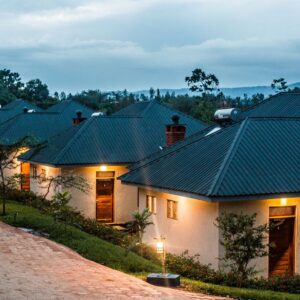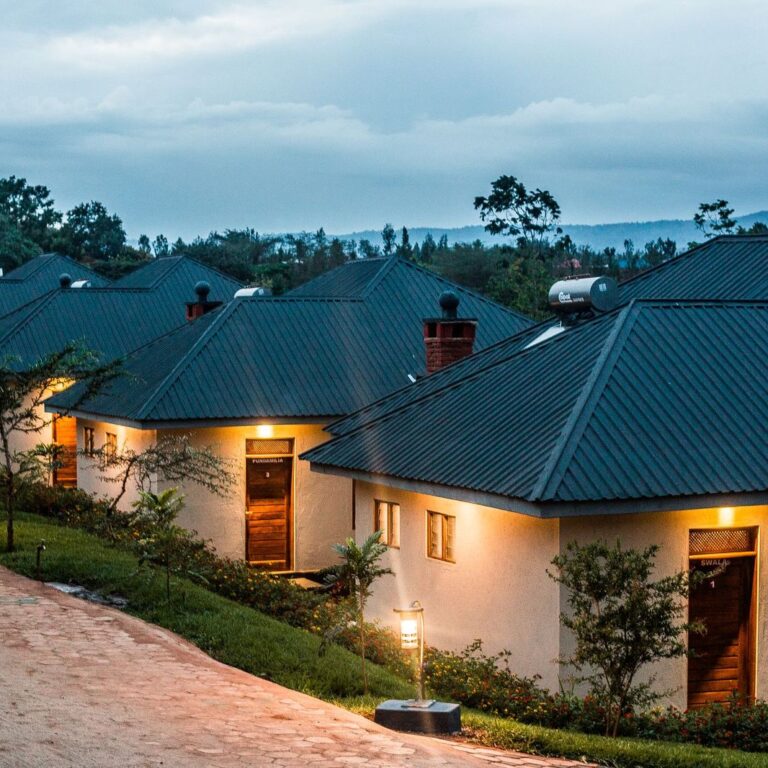How fit do you need to be to climb Kilimanjaro?
Mount Kilimanjaro, Africa’s highest peak, is a bucket-list challenge for adventurers from around the globe. Standing at 5,895 meters (19,341 feet), its snow-capped summit beckons hikers with the allure of conquering one of the world’s most iconic mountains. But a question often asked is: Can I climb Kilimanjaro with no training?
The answer is more nuanced than a simple yes or no. While some have managed to reach the summit with minimal preparation, climbing Kilimanjaro without proper training can be a risky decision. Here’s what you need to know before embarking on this once-in-a-lifetime adventure.
The Nature of Kilimanjaro
Kilimanjaro is a non-technical climb, meaning you don’t need mountaineering experience, ropes, or ice picks to reach the summit. Many routes are accessible to those with little to no climbing expertise. However, it’s important to understand that non-technical doesn’t mean easy. The hike is long, demanding, and involves walking for several hours each day over steep, rocky terrain.
One of the greatest challenges of Kilimanjaro is the altitude. Even seasoned hikers can be affected by altitude sickness as they ascend. The lack of oxygen at higher elevations causes many climbers to turn back before reaching the summit, even if they are physically fit. Thus, while Kilimanjaro doesn’t require technical climbing skills, physical endurance and preparation are key to a successful summit attempt.
Why Training Matters
Although it’s possible to climb Kilimanjaro with little to no formal training, being physically prepared greatly increases your chances of reaching the summit and enjoying the experience. The trek involves multiple days of hiking, often in extreme weather conditions, on terrain that can be rocky, uneven, and steep.
Physical training helps with:
Stamina: The hike to Kilimanjaro’s summit typically takes five to nine days, depending on the route. You’ll be walking for up to six or eight hours a day, and sometimes more on summit day. If you haven’t prepared your body to handle that kind of exertion, fatigue can set in quickly, reducing your chances of success.
Strength: Climbing Kilimanjaro involves ascending and descending steep sections, so leg strength is essential. Without adequate strength training, you may struggle with endurance, particularly on the descent when tired muscles can increase the risk of injury.
Acclimatization: Though training cannot fully prepare your body for high-altitude environments, building cardiovascular fitness helps. Aerobic exercises, like running or cycling, improve your lung capacity, enabling you to better handle lower oxygen levels at altitude.
Can You Do It Without Training?
Technically, yes—you could attempt to climb Kilimanjaro without training, but the risks are significantly higher. Kilimanjaro demands more from your body than a typical hiking trip. Here are a few potential outcomes of attempting the climb with no training:
Increased Risk of Altitude Sickness: Fitness and acclimatization go hand in hand. Without training, your body may struggle to adjust to the thin air as you climb higher. This can lead to acute mountain sickness (AMS), with symptoms like headaches, dizziness, nausea, and fatigue. In severe cases, AMS can become life-threatening, requiring immediate descent.
Fatigue and Exhaustion: Without proper preparation, the physical demands of Kilimanjaro can leave you exhausted after just a few days of hiking. When you’re tired, decision-making suffers, and your body becomes more prone to injury. Reaching the summit requires energy reserves, especially on the final day, where a steep ascent over rocky terrain awaits.
Reduced Enjoyment: The thrill of conquering Kilimanjaro is undeniable, but if you’re struggling with physical limitations, the experience can become more of a test of endurance than an enjoyable adventure. Proper training allows you to enjoy the journey, take in the incredible views, and appreciate the moment without being overwhelmed by exhaustion.
Training Tips for Kilimanjaro
If you’re serious about reaching the summit, some level of physical training is recommended. You don’t need to be an elite athlete, but building your fitness over time can make the climb safer and more enjoyable. Here are some basic training guidelines to follow:
Start Early: Give yourself at least 2 to 4 months to prepare. This allows time to gradually build stamina and strength.
Cardio Workouts: Engage in activities that raise your heart rate and improve lung capacity. Running, swimming, cycling, or brisk walking are excellent cardio exercises that can help prepare you for the hike.
Hiking Practice: Since Kilimanjaro involves hours of walking, it’s crucial to get your body used to long hikes. Start with shorter hikes, then gradually increase distance and elevation. If possible, practice hiking on uneven or steep terrain to mimic the conditions you’ll face on the mountain.
Strength Training: Focus on leg and core strength with exercises like lunges, squats, and planks. Strengthening your muscles will help you handle the steep sections of the trek and prevent injury.
Practice with a Backpack: Carrying a backpack while hiking can add to the physical strain, so it’s good to practice with the weight you’ll be carrying on the climb. This helps your body adjust and strengthens your back and shoulders.
Stretch and Recover: Flexibility is important too. Incorporate stretching or yoga into your routine to prevent muscle tightness and injuries.
Other Considerations
If you’re short on time and wondering if you can make the climb without training, consider choosing a longer route. Longer Kilimanjaro routes, such as the Lemosho or Northern Circuit, offer more time to acclimatize, which can help your body adjust to the altitude. This might give you a better chance of summiting without feeling rushed or overexerted.
Also, make sure to climb with a reputable operator. Experienced guides will monitor your health closely, adjust your pace, and make recommendations if you show signs of altitude sickness.
FAQs: Can I Climb Kilimanjaro With No Training?
Kilimanjaro does not require exceptional fitness, thankfully. Some weeks of light exercise and training walks should be more than sufficient. The most formidable challenges are mental state and altitude sickness. You cannot really prepare for these! Here are a few extra tips from experience:- Really break in your walking boots beforehand.- Pack biodegradable wet wipes. No showers on the mountain..- Pack some high energy bars for a quick boost.- Learn a few basic Swahili phrases. Guides love this!
Is Kilimanjaro a Technical Climb?
Kilimanjaro is not a technical climb, meaning it doesn’t require specialized mountaineering skills or equipment such as ropes and harnesses. However, climbers should be prepared for the physical challenges and altitude-related issues.
How Long Does It Take to Climb Kilimanjaro?
The duration of the climb varies depending on the chosen route. On average, it takes around 5 to 9 days to ascend and descend Kilimanjaro. Longer routes provide better acclimatization opportunities.
Do I Need a Guide to Climb Kilimanjaro?
While it’s possible to climb Kilimanjaro independently, hiring a certified guide is highly recommended. Guides are familiar with the terrain, can assist in emergencies, and enhance the overall safety and success of the climb.
Can I Climb Kilimanjaro if I’ve Never Been at High Altitude?
Climbers without prior high-altitude experience can still attempt Kilimanjaro. However, gradual acclimatization and proper training are essential to minimize the risk of altitude sickness.
What Training Should I Do Before Climbing Kilimanjaro?
Training should include cardiovascular exercises (running, hiking), strength training (especially for legs and core), and altitude-specific preparations. Additionally, practicing with the gear you’ll use on the climb is beneficial.
Are There Age Restrictions for Climbing Kilimanjaro?
While there is no strict age limit, climbers should be in good health. Some tour operators may have age restrictions, so it’s advisable to check with the chosen operator before planning the climb.
Can a beginner climb Kilimanjaro without training?
Most people know that climbing Kilimanjaro does not require any technical climbing skills. In fact, it’s mostly just a long walk to get to the top. To summit, you need to be prepared to walk anywhere from 4 to 9 hours a day, and even more on the summit night. If you don’t train, this is a lot of walking to take on.
Can a normal person climb Kilimanjaro?
Yes, the average active person can climb Kilimanjaro, but you obviously need to be prepared. The more you train physically, the more you prepare mentally, the more you stay positive and the more you make your ascent a fun project rather than a chore, the greater your chances of making the summit.
Can you hike Kilimanjaro without training?
The climb is a hike so no specialist climbing skills are necessary. You must have done extensive hill-walking or aerobic exercise in the run up to your Kilimanjaro Climb. If you do not currently enjoy a good level of fitness it may take many months of training to reach a suitable level of fitness to enjoy the walk.
Can inexperienced climbers climb Kilimanjaro?
The simple answer to the question – Can a beginner climb Kilimanjaro is Yes. But with any altitude trek, the better prepared you are the more you are going to enjoy it. Reaching the summit of Kilimanjaro is achievable by anyone with the correct preparation.
Is Kilimanjaro harder to climb than Everest?
Everest Base Camp’s success rate is around 90%, while Kilimanjaro’s is only half that at around 45%! The fast altitude gain on the Roof of Africa is usually responsible for unsuccessful summits, which is why it really is so important to get your training in before heading to Tanzania and setting foot on Kili.
Is Kilimanjaro overcrowded?
Between 30,000 to 50,000 people climb Kilimanjaro annually, most of whom visit during the dry seasons. These dry seasons total 7 out of 12 months. If we divide the number of visitors by 7 months, we get an average of 4,285 to 7,124 people per month. Taken further, that’s 142 to 237 people starting a climb every day.
How Your Level of Fitness Will Impact Your Kilimanjaro Experience
Your fitness level plays a crucial role in your Kilimanjaro experience. A higher fitness level enhances endurance, making the challenging hike more manageable. It helps with altitude adaptation, reducing fatigue and the risk of altitude sickness. Good conditioning improves overall stamina, mental resilience, and recovery time, enabling you to handle the mountain’s varying terrains and long days. A fitter body means a more enjoyable and successful climb, with a greater chance of reaching the summit.Final though climbing kilimanjaro without training is it possible?
Climbing Kilimanjaro is a remarkable adventure that offers a sense of accomplishment and breathtaking views. However, attempting the ascent without proper training is a risky endeavor. Physical preparation, altitude acclimatization, and mental readiness significantly contribute to a successful climb. For those aspiring to conquer Kilimanjaro, investing time in training not only enhances the chances of reaching the summit but also ensures a safer and more enjoyable experience amidst the awe-inspiring landscapes of Africa’s highest peak.






